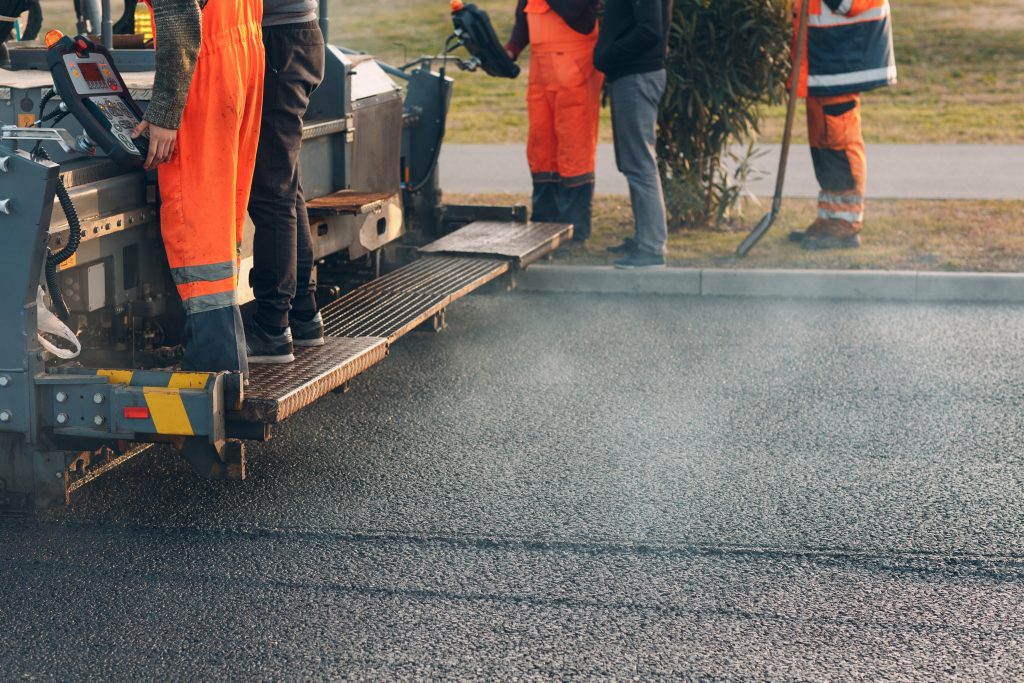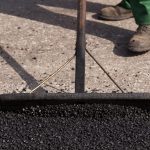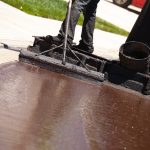My Blog
Asphalt Drying Time: How Long Does Asphalt Take to Dry?
September 23, 2024

Wondering how long does asphalt take to dry? New asphalt usually takes 48 to 72 hours to dry enough for light traffic. This can vary with weather and pavement thickness. This article explains these factors and offers tips to ensure proper drying.
How Long Does Asphalt Take to Dry?
The drying time for a new asphalt surface usually spans from 48 to 72 hours, during which the surface hardens sufficiently to support light foot and vehicle traffic. The duration required for this initial set can fluctuate based on factors such as how thick the layer of asphalt is and the conditions at the time it was paved.
If only exposed to light traffic, typically an asphalt surface may be ready after two or three days. Circumstances like elevated humidity levels or reduced air temperatures could lengthen the drying period by up to one week. Conversely, warm air temperatures coupled with ample sunlight might expedite the process by shortening it approximately by a day.
Variables such as climate conditions, level of humidity in the air, prevailing temperature during installation, and even how thickly pavement has been laid are crucial determinants of an asphalt’s drying time. Understanding these variables is key when scheduling your paving tasks since they dictate not just timelines but also readiness for handling regular traffic patterns.
Impact of Weather Conditions on Asphalt Drying Time
Weather conditions significantly affect asphalt drying time. High humidity can prolong drying because saturated air slows down evaporation, causing the asphalt to stay wet longer.
Conversely, warm temperatures generally speed up drying compared to cooler ones. Direct sunlight accelerates evaporation, leading to quicker drying. Windy conditions also help by increasing airflow over the asphalt surface.
Adverse weather conditions like rain and cold climates pose significant challenges. Rain can saturate the asphalt surface, slowing down drying. Likewise, cold temperatures hinder moisture evaporation, prolonging the process.
Monitoring the weather and planning your asphalt installation accordingly help mitigate these issues.
Difference Between Drying and Curing
The period for asphalt to dry is usually between 48 and 72 hours after it has been laid down. This drying time indicates when the pavement can handle both foot traffic and vehicle traffic without being damaged. This does not imply that the asphalt has become completely solidified.
To fully cure, which means to achieve its ultimate hardness through a chemical process where molecules within the material bond together, asphalt requires about six months to one year. It’s during this phase that cured asphalt undergoes oxidation and gradually shifts in hue from black to gray.
It’s important to recognize that while dried-out asphalt may be suitable for use, it hasn’t completed its chemical process of hardening until it’s fully cured. Understanding these distinct phases is vital when considering long-term maintenance plans and aiming to ensure maximum longevity of your pavement surface following installation.
Factors Affecting Asphalt Curing Time
The time it takes for asphalt to be cured can be influenced by numerous factors. It’s essential to keep a close eye on the weather conditions, as performing pavement work under unfavorable weather can greatly hinder the curing process. Extended curing times may result from high levels of humidity or low temperatures.
Ensuring that heat and moisture are appropriately sealed during paving plays a crucial role in accelerating the asphalt curing time. Correct compaction at the time of installation is also key, preventing any spaces within and thus securing an effective cure while spreading out the mixture evenly across the surface, contributing to its robustness.
It is recommended that new asphalt surfaces should not bear vehicular traffic for 24-48 hours post-installation to allow adequate initial curing. Allowing vehicles too soon could lead to unwanted indentations such as ruts and depressions, which compromise the integrity of your pavement over time. Adhering strictly to these instructions significantly enhances your asphalt’s longevity.
Best Practices During the Drying Process

Preserving the condition of a new asphalt surface is paramount, and this hinges on adhering to optimal procedures throughout the curing period. Prematurely subjecting it to vehicular movement may lead to harm such as indentations or tire tracks. It’s also important to keep heavy loads, sharp objects, and substances that could cause stains off the fresh pavement.
It’s advisable not to park on freshly installed asphalt for at least two weeks post-application. This helps in preventing any impressions from forming and contributes toward achieving an even surface. Restricting substantial traffic during these initial days is essential in safeguarding against lasting impairment.
By following these guidelines carefully, you ensure that your asphalt pavement remains pristine. Meticulous attention during its drying phase can considerably prolong its durability and facilitate effective installation of your asphalt parking area or roadway.
When to Sealcoat New Asphalt
Sealcoating is crucial for maintaining asphalt longevity. Wait about 90 days to seal coat fresh asphalt to ensure proper curing. However, it can be applied as early as 30 days after laying to protect during the curing process.
Sealcoating offers multiple benefits: protecting asphalt from UV rays, snow, fluid spills, and rain. It also helps melt snow and ice faster, enhancing safety and functionality. Applying asphalt sealer reduces oil evaporation, preventing cracks.
Before applying the seal coat, make any necessary repairs to the asphalt surface. This ensures proper adhesion and maximum protection. Timely seal coating can significantly extend the lifespan of your pavement.
Maintenance Tips for Fresh Asphalt

To preserve the condition of fresh asphalt, it is crucial to conduct frequent checks and address any issues swiftly. If you spot any fissures on the surface, they should be filled without delay to prevent water ingress that can lead to substantial damage over time.
When dealing with new asphalt, take care not to park vehicles prone to leaks on it. Automotive fluids have a detrimental effect on the integrity of the pavement. Similarly, refrain from placing weighty items such as barbecue grills or outdoor furniture directly onto the asphalt because they may leave indentations that compromise its strength.
On particularly warm days, sprinkling water over your asphalt can aid in cooling and firming up its surface. This precautionary measure helps prevent the material from becoming excessively pliable and vulnerable to harm. Adhering rigorously to these recommendations will enhance both the resilience and lifespan of your paved areas.
Why Choose Apex Asphalt Restoration?
Apex Asphalt Restoration is committed to delivering superior craftsmanship and gives individualized attention to each project. They extend their expert asphalt services to both homeowners and business proprietors, ensuring meticulous care for every freshly laid asphalt driveway or parking space. Their devotion to providing high-caliber service at competitive rates sets them apart.
Their array of offerings includes laying new asphalt surfaces, updating worn-out pavement, overlaying current structures with fresh layers, applying seal coating treatments, as well as executing patches, extensions, and comprehensive repairs on existing driveways. Apex prioritizes outstanding customer experiences by swiftly attending to queries and maintaining clear communication throughout the entire process.
To assist in planning your endeavor effectively, they also present a complimentary estimate for all proposed services.
Copyright © 2025 Apex Asphalt Restoration – All Rights Reserved.


